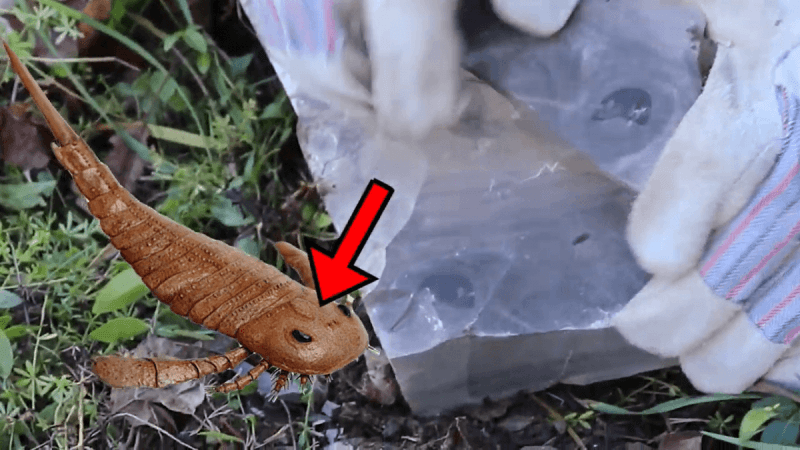Archaeologists from the Chinese Academy of Sciences' Nanjing Institute of Geology and Palaeontology and Center for Excellence in Life and Paleoenvironment unearthed Eurypterid fossils in China. These significant mid-Paleozoic chelicerate arthropods have recently received great attention for their evolution and palaeoecological importance.
Science Bulletin published the paper on these Terropterus xiushanensis fossils. According to co-author Bo Wang and colleagues, T. xiushanensis is the first member of the family Mixopteriade to be identified in 80 years.

The findings
This terrifying creature existed between 443.8 million and 419.2 million years ago. When the scorpions were apex predators, they would pounce on unwary fish and molluscs, sweep them up with their pedipalps, and thrust them into their jaws.
T. xiushanensis is the first-ever mixtopterid to be identified in what might be the supercontinent of Gondwana, which developed when the bigger supercontinent Pangaea split in half.
Its discovery, among other eurypterids from China and several undescribed ones, indicates a collection bias in this group. According to the research studies, its spiky limbs were probably employed to catch food, similar to whip spiders' spiny pedipalps.
Further research, particularly in Asia, may show a more global reach of mixopterids and maybe additional eurypterid families.

The oldest described eurypterid
The Winneshiek Lagerstätte's Middle Ordovician (Darriwilian) fauna comprises around 150 eurypterid individuals, including juveniles, conserved as carbonaceous cuticular remnants. This taxon is the earliest known eurypterid, dating back 9 million years.
The Winneshiek Shale was excavated from its single outcrop near Decorah, northeastern Iowa, in 2010. Other samples were taken from blocks degraded by floods in the top 2–3 m.
Composites were extracted by disaggregating the matrix with water and removing it from the cuticle with steel periodontal probes. Photographs were taken with a Leica DFC420 digital camera and a Leica MZ16 stereomicroscope
Pentecopterus decorahensis gen. et sp. nov. is the name given to the new eurypterid species. Pentecopterus consists of two or even more pairs of bristles per podomere on prosomal appendage IV, a decrease of all spines except the pair on the penultimate podomere of appendage V, and also ornamentation of guttate scales, which include angular scales all along the posterior margin of the dorsal tergites and in longitudinal rows along the tegites and tergites.
According to Pentecopterus' morphology, the Megalograptidae are derived carcinosomatoid clades, not primitive eurypterids.
Eurypterids either evolved quickly or older ancestors have yet to be identified. From the known instars of Pentecopterus decorahensis, it appears that eurypterids had severe appendage differentiation throughout development, say scientists.














